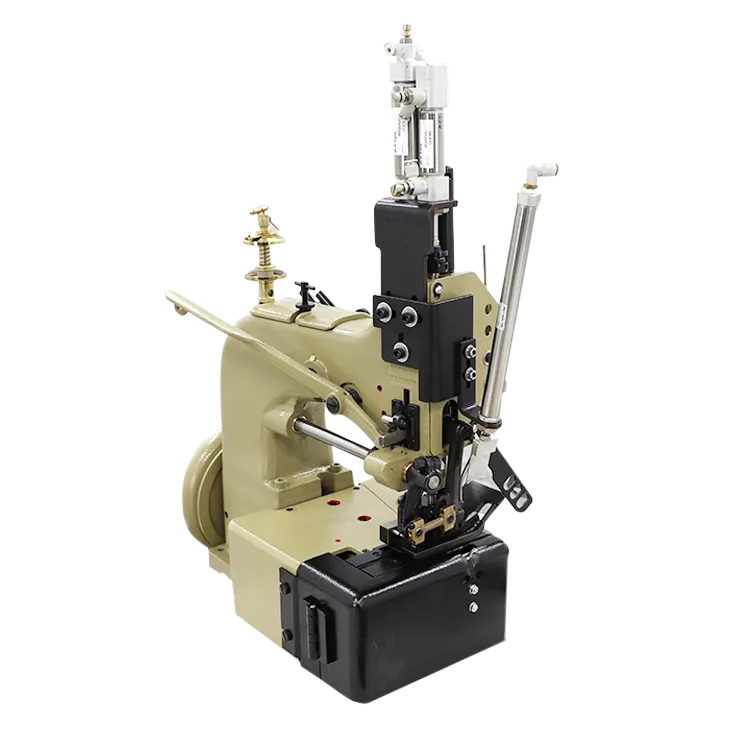fibc sealing sewing machine
Understanding FIBC Sealing Sewing Machines A Comprehensive Overview
FIBC (Flexible Intermediate Bulk Container) bags, also known as bulk bags or tote bags, play a vital role in the transportation and storage of dry bulk materials across various industries. These bags are designed to hold large volumes, often ranging from 500 kg to over 2000 kg, making them a preferred choice for agricultural products, chemicals, construction materials, and food supplies. An essential component in the production of FIBC bags is the sealing sewing machine, which is crucial for ensuring the strength and durability of the seams that hold these bags together.
The Importance of Sealing in FIBC Production
The sealing process in FIBC manufacturing involves stitching the fabric to form a secure container that can withstand heavy loads. Poorly sealed bags can lead to product spillage, contamination, and overall inefficient handling of bulk materials. This is why the quality of the sealing sewing machine directly impacts not just the safety and reliability of the FIBC bags but also the operational efficiency of businesses relying on these containers.
Features of FIBC Sealing Sewing Machines
FIBC sealing sewing machines are specifically designed to cater to the unique requirements of bulk bag manufacturing
. These machines come with several features that enhance their functionality and efficiency1. Heavy-Duty Construction Given the robust nature of the materials used in FIBC production, these sewing machines are built to handle heavy-duty fabrics such as polypropylene and polyethylene. They often feature powerful motors that provide sufficient torque to sew through multiple layers of thick materials.
2. High-Speed Sewing Speed is a critical factor in FIBC production. Advanced models of sealing sewing machines offer high sewing speeds without compromising on stitching quality, significantly increasing production output.
fibc sealing sewing machine

3. Custom Stitches and Patterns Different applications require different types of stitches. FIBC sealing machines can be programmed to create various stitching patterns, ensuring that the seams are tailored to the specific needs of the bags being produced.
4. User-Friendly Interface Modern sealing sewing machines come equipped with user-friendly controls and interfaces, allowing operators to quickly set up and modify sewing parameters, significantly reducing the learning curve for new users.
5. Quality Control Features Many machines are now designed with built-in quality control systems that can detect stitching errors or inconsistencies in real-time, enabling immediate corrective action.
Maintenance and Longevity
To maximize the lifespan and efficiency of FIBC sealing sewing machines, regular maintenance is paramount. This includes routine cleaning, lubrication of moving parts, and timely replacement of worn-out needles and components. A well-maintained machine not only ensures seamless production but also improves safety for operators.
Conclusion
FIBC sealing sewing machines are indispensable in the production of high-quality bulk bags, ensuring that they can safely transport a variety of materials without risk of leakage or failure. Their robust features, combined with advancements in technology, make them essential tools in the manufacturing process. As industries continue to evolve, the role of innovative sealing machinery in enhancing productivity and safety will only become more pronounced, highlighting the importance of investing in reliable FIBC sealing solutions. For businesses involved in bulk handling, understanding and utilizing the right sealing sewing machines can be a game-changer in operational efficiency and product quality.
-
Industrial Cylinder Arm Sewing Machine: Revolutionizing Heavy-Duty SewingNewsJul.28,2025
-
Cylinder Arm Sewing Machine: Perfect for Special Sewing ApplicationsNewsJul.28,2025
-
Cylinder Bed Sewing Machine: Essential for Sewing Complex MaterialsNewsJul.28,2025
-
Heavy Duty Sewing Machine: The Essential Tool for Industrial ApplicationsNewsJul.28,2025
-
Computerized Pattern Sewing Machine: Revolutionizing Precision StitchingNewsJul.28,2025
-
Heavy Duty Industrial Sewing Machine: Power Meets PrecisionNewsJul.28,2025
-
Leather Sewing Machine: The Industrial Standard for Tough MaterialsNewsJul.18,2025





























